Pile box hive
The pile box hive has a very simple structure. It does not contain any removable frames.
- Structure of a pile box hive
- Extracting honey
- Box dimensions and how to make it
- Structure of the top box
- Structure of the entrance
- Advantages of a pile box hive
- Disadvantages of a pile box hive
- Comparison to the Langstroth hive
- Comparison to the log hive
- A pile box hive is suitable for hobbyists and a sideline beekeping
Structure of a pile box hive
The structure is simply a box with a small entrance. Like log hives, bees are allowed to build comb as they want.
This video is of a two week old Japanese honey bee colony.
A pile box hive consists of 2 to 6 boxes. Just 2 boxes are needed to act as a bait hive. As the colony grows, unlike a Langstroth hive where boxes are added to the top, additional boxes need to be added to the bottom.
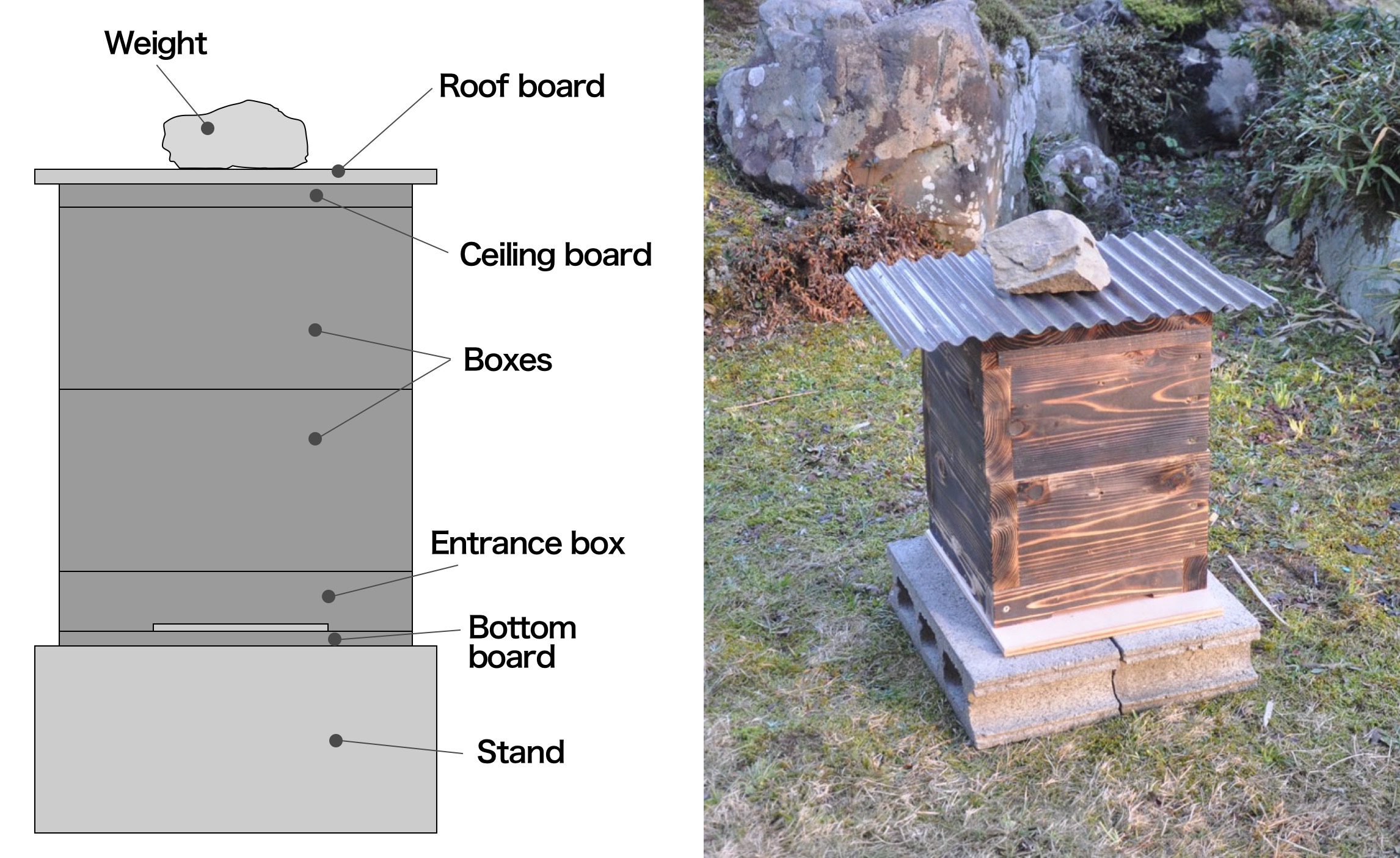
Extracting honey
Although a pile box hive does not have any frames, extracting honey is an improvement compared to a log hive.
A pile box hive allows us to remove only the top box for extraction after the beees have filled it with honey. Unlike a log hive, the colony does not need to be destroyed during extraction.
Although a pile box hive does not have any frames, the method for extracting honey is an improvement.
Box dimensions and how to make it
The box is a very simple structure. Japanese beeswax is softer than Western beeswax. The comb sometimes requires support to prevent it from falling. Two wires are crossed and attached within the box to provide this support.
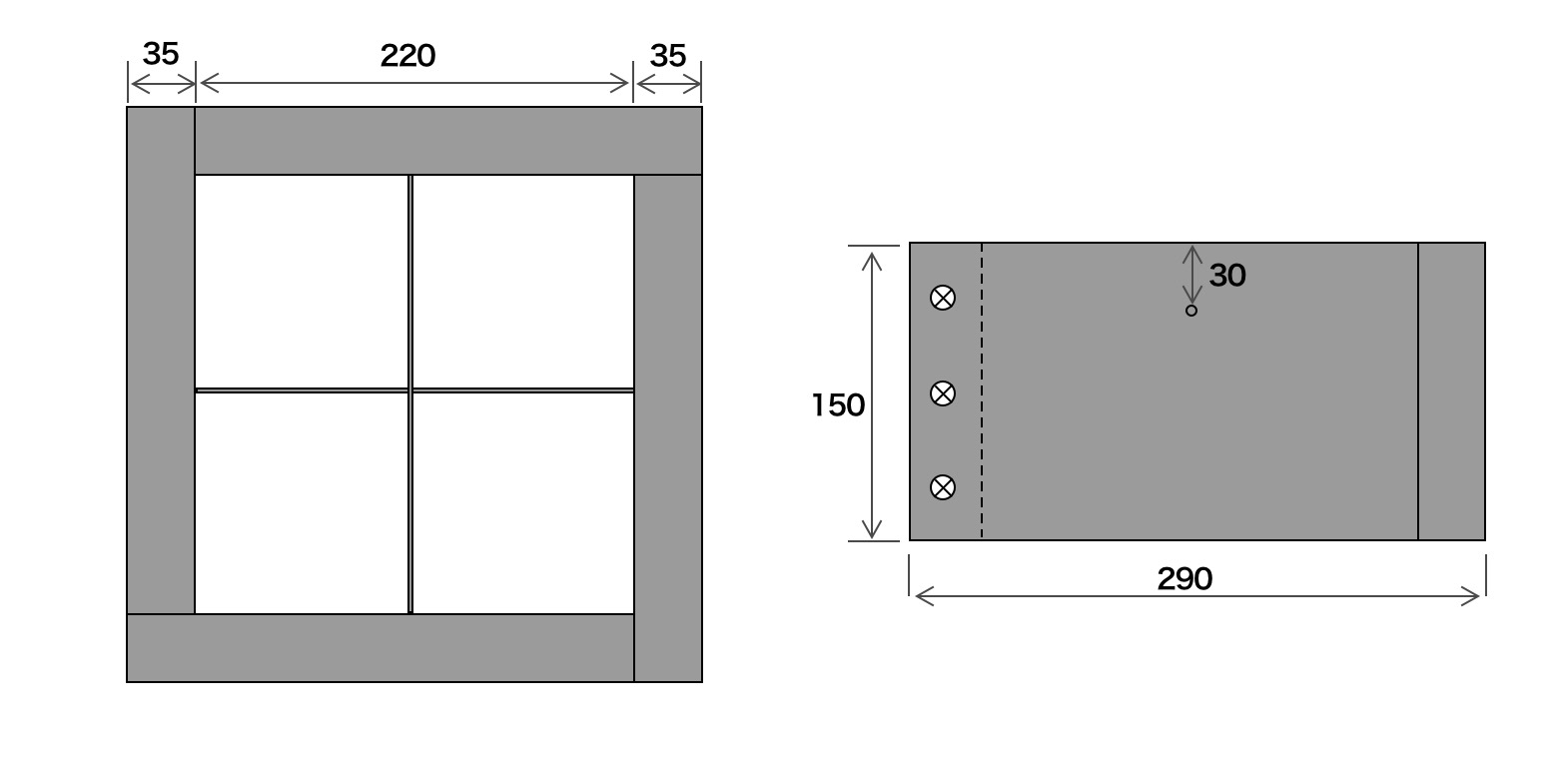
Structure of the top box
The top box has a duckboard and a lid. The following image is a cross-section of the top box. A duckboard is attached to make extracting honey easier.
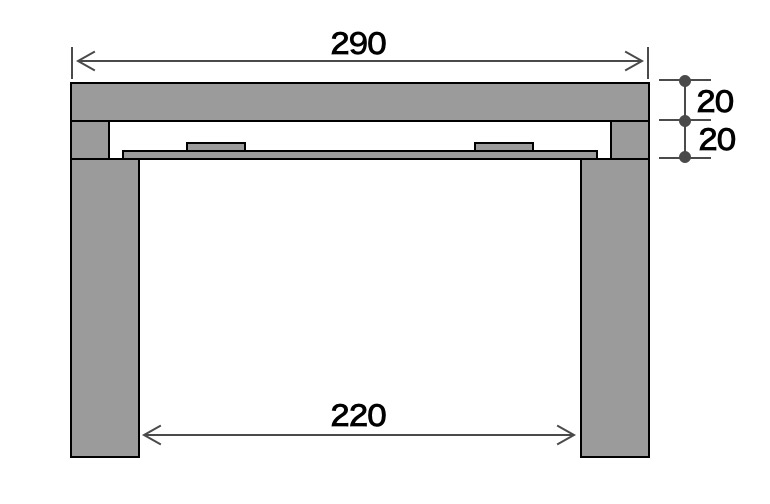
The dimension of the lid.
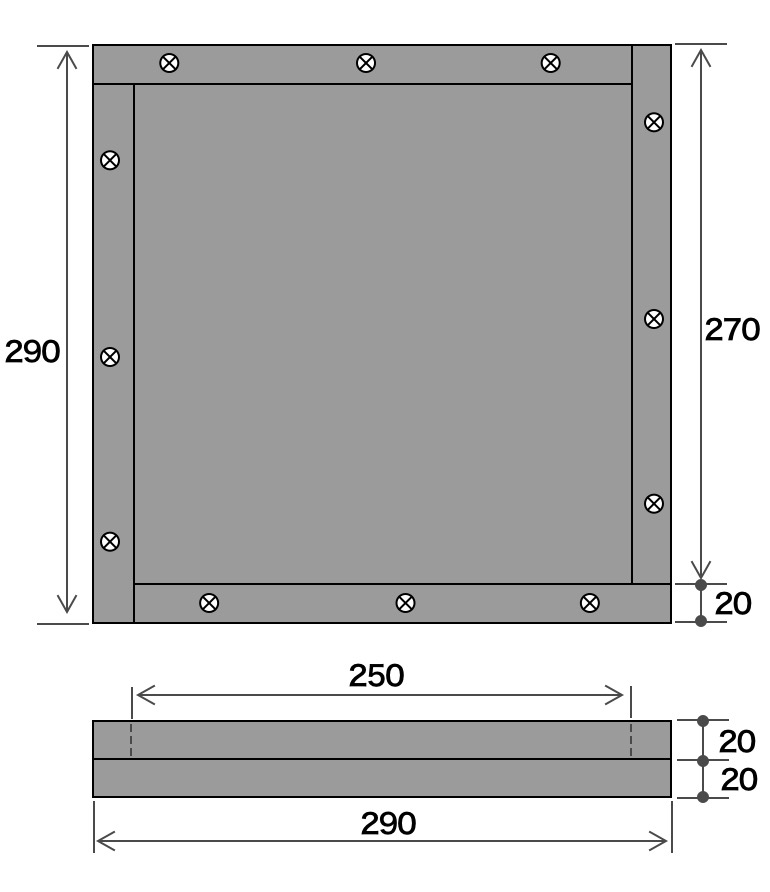
The dimension of the duckboard.
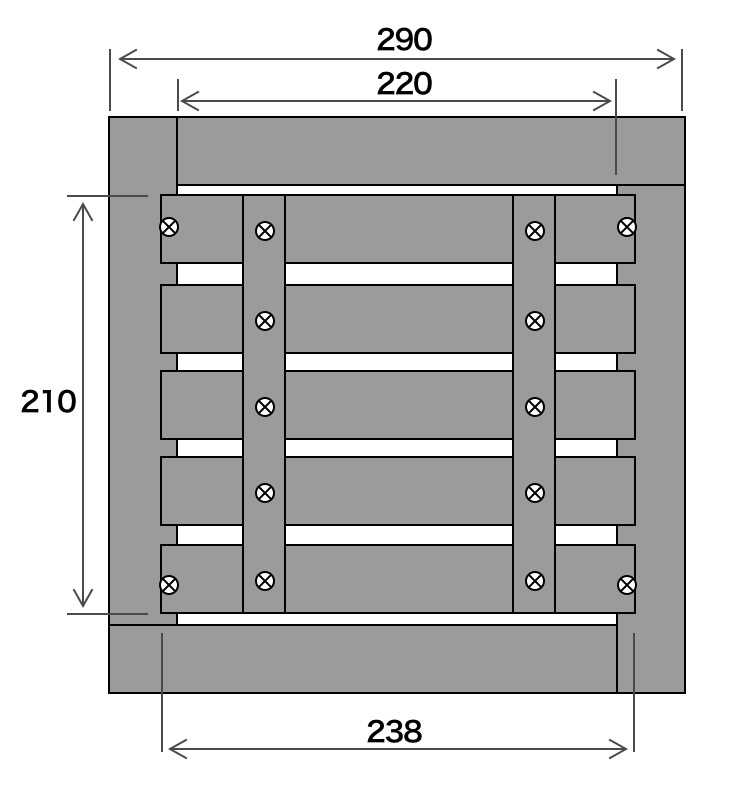
Structure of the entrance
The entrance frame is similar to the box. It is set on top of a board.

The entrance is important to protect the bees from giant hornets. Giant hornets are capable of destroying an entire bee colony. The hornets take honey and bee larvae to feed their own larvae.
The entrance needs to be small enough to prevent giant hornets from invading. To learn more about hornets, please check out this article.
The Japanese giant hornet (Vespa mandarinia japonica) is terrible. It can completely destroy a bee colony.
Advantages of a pile box hive
There are many advantages, especially for hobbyists.
- Low cost to construct the hive
- Less time and effort neeeded to manage the bees
- Few skills and know-how are needed
A pile box hive is so low maintenance that it can be left unchecked for months.
Disadvantages of a pile box hive
There are some limitations to a pile box hive that restrict how you can manage a colony.
The basic idea is the same as a log hive. This hive provides an enclosed space for wild bees.
Honey extraction is much easier than a log hive, but some limitations are almost same.
You cannot do the following things:
- control swarming
- split the colony
- combine colonies
- collect honey from a single flower source
Honey production is lower because honeycombs are also removed during honey extraction.
Comparison to the Langstroth hive
In Japan, the Langstroth hive is used widely to keep Western bees, but it is not often used to keep Japanese bees.
It is often said that the productivity of a Langstroth hive is higher. I am not sure it is true when keeping Japanese bees.
Actually, honey production per hive can be higher. However, in terms of time management, honey production per hour is more important.
A pile box hive can be more productive in terms of honey production per hour of labor because less time and effort are needed.
All I have to do when I use a pile box hive is:
-
Make a beehive
-
Set a bait hive in the spring
-
Add boxes a few times throughout the year
-
Extract honey
At a minimum, I need only 5 hours to extract 5kg of honey.
On the other hand, with a Langstroth beehive, it is expensive and takes longer if you make it yourself.
I need to inspect the colony almost every week and it takes a lot of time to go to the places where the hives are located.
How much more honey could I potentially get? As mentioned, I can get somewhere between 5kg - 10kg per hive on average when I use a pile box hive.
The increase in honey production may not be worth the time and effort required.
In addition to this, the Langstroth hive increases the risk of absconding. For these reasons, the Langstroth hive is not used widely for Japanese bees.
Comparison to the log hive
The log hive itself does not have any advantage over a pile box hive, but the method of honey extraction is disadvantageous. (However, it is sometimes said Japanese honey bees prefer a log hive because it mimicks their natural habitat, such as a hollow tree.)
The log hive and pile box hive share many of the same points:
- Inner structure (containing no frames)
- Cost and effort to make the hive
- Method of obtaining bees
- Inspection method
- Bee management
However, honey extraction is different.
The biggest problem with a log hive is that you need to destroy the colony and force out all of the bees out in order to extract honey.
The bees lose their larvae and honey in the fall, which means they cannot survive over the winter.
In that case, you need to capture swarms every spring, so it is not easy to increase the number of managed colonies.
Some beekeepers have some methods to avoid destroying the colony, but they are not easy to carry out and require more time and effort.
It is better to use a pile box hive if you do not want to destroy the colony.
A pile box hive is suitable for hobbyists and a sideline beekeping
I understand that the Langstroth hive has many advantages over the pile box hive. I do not think that the pile box hive is always better than a Langstroth hive in all instances.
It depends on your preference and why you are keeping bees. A pile box hive is suitable for hobbyist because:
- It does not take much time and effort
- Low learning curve
- Initial cost is lower, under a few hundred US dollars or less
Typically hobbyists do not need to have a high honey production. Around 10kg is enough in many cases. You can extract enough honey for your family and friends without it taking a lot of time and money.
You still have time to enjoy other hobbies like a kitchen garden, even if you are working full-time.
A pile box hive is suitable for sideline beekeeping as well.
You can find many places to keep your hive if you live in a rural area. It's ok if it's not located near your home since you do not have to manage your hives often.
The honey produced by Japanese bees is more expensive than that of Western bees, costing about 100 US dollars per kg.
If you have 20 hives and extract 100kg of honey, the revenue can be up to 10,000 US dollars.